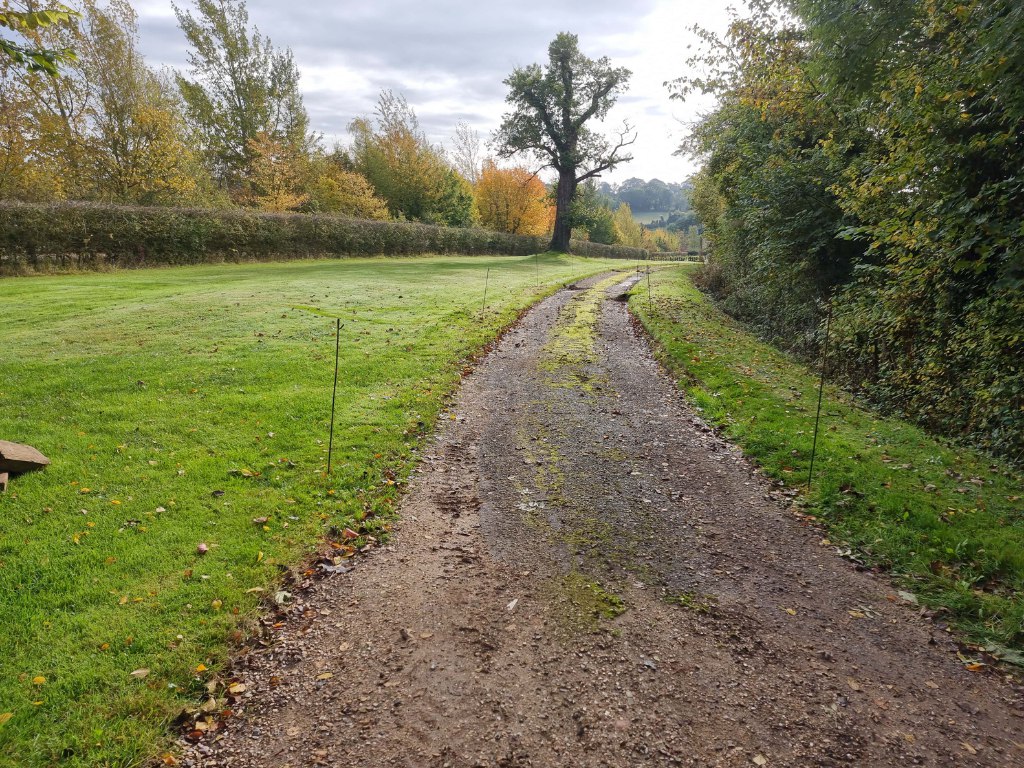When Is It Time to Resurface Rather Than Replace? Signs for Driveways, Paths & Patios
Every outdoor surface, whether it’s a driveway, path, or patio, endures years of use and weather exposure. Over time, cracks, fading, and general wear can take their toll, leaving homeowners wondering whether it’s better to resurface or completely replace their existing surface. Understanding the difference between the two and recognising the right time for each can help you maintain your property effectively while protecting its appearance and functionality. Sawston Driveways provides expert resurfacing and installation services throughout Sawston, Cambridgeshire, helping homeowners restore and enhance their outdoor spaces with lasting results.
Understanding Resurfacing vs Replacement
Before deciding which option is right for your surface, it’s important to understand the distinction between resurfacing and replacement.
- Resurfacing involves applying a new top layer over the existing surface. It restores the appearance, improves performance, and seals minor defects, extending the life of the driveway, path, or patio.
- Replacement means removing the old surface entirely and installing a new one from the ground up. This is usually necessary when the base layer or foundation has been compromised.
The decision depends on the current condition of the surface, the extent of damage, and the materials used.
When Resurfacing Is the Right Choice
Resurfacing is a cost-effective and efficient way to give your outdoor surfaces a fresh lease of life without the need for a full rebuild. It’s ideal when the base is structurally sound but the surface shows signs of age or mild damage.
1. Minor Cracks and Surface Wear
Hairline cracks, small holes, or surface-level imperfections are common on driveways and patios, especially after years of use. If the underlying structure remains stable, resurfacing can effectively seal these cracks and prevent further deterioration.
2. Fading or Discolouration
Exposure to sunlight, rain, and vehicle traffic can cause tarmac, resin, and block paving surfaces to lose their original colour. A resurfacing treatment restores vibrancy and provides added protection against future fading.
3. Surface Staining or Oil Damage
Driveways often suffer from oil spills, tyre marks, and weather-related staining. A resurfacing application can conceal these marks and create a cleaner, more uniform appearance across the surface.
4. Slight Unevenness or Water Pooling
Minor uneven patches or low spots that allow water to collect can be corrected through resurfacing. By adding a new layer, the gradient is smoothed out, ensuring better water runoff and improved durability.
5. Desire for an Updated Look
Sometimes, homeowners simply want to refresh the appearance of their property. Resurfacing offers the opportunity to update colours, textures, or finishes without the disruption of a full replacement.
When Full Replacement Is Necessary
While resurfacing can address many surface-level problems, it won’t solve deeper structural issues. A full replacement is typically required when the base or substructure has deteriorated beyond repair.
1. Deep Cracks and Structural Damage
Large, spreading cracks that penetrate through multiple layers of the surface are a clear sign that the foundation has weakened. Resurfacing in these cases would only be a temporary fix, as the cracks are likely to reappear.
2. Extensive Drainage Problems
If water consistently pools across the surface or causes erosion, the underlying gradient or drainage design may need to be reworked. Replacement allows for proper regrading and improved water management.
3. Loose, Shifting, or Sinking Areas
When sections of block paving or slabs begin to move or sink, it indicates that the sub-base has failed or become compacted unevenly. In these situations, resurfacing will not provide stability — full reconstruction is the only reliable solution.
4. Repeated Repairs Over Time
If your driveway or patio has required multiple repairs in recent years, this often signals that the material has reached the end of its lifespan. Replacement ensures a fresh, long-lasting surface built to modern standards.
The Importance of a Professional Assessment
Determining whether resurfacing or replacement is appropriate requires expert evaluation. A professional inspection considers the depth and extent of cracks, the condition of the base layers, and the materials used in the original installation.
At Sawston Driveways, our experienced team conducts thorough site assessments across Sawston, Cambridgeshire, to recommend the most effective and lasting solution for each surface. We consider the age of the structure, its usage, and environmental factors to ensure that every project delivers durability and visual appeal.
Common Materials Suitable for Resurfacing
Different surfacing materials respond in varying ways to age and wear. Here are a few of the most common materials that can often be resurfaced successfully:
- Tarmac: A new layer can be applied to fill cracks and restore a smooth, black finish.
- Resin-bound surfaces: Recoating can refresh the surface and reinforce its permeability.
- Block paving: Re-sanding and sealing can revive appearance and stabilise joints.
- Concrete: Surface overlays can conceal minor imperfections and improve texture.
A professional driveway specialist will advise on whether resurfacing is appropriate for the existing material or whether structural work is needed first.
Benefits of Resurfacing Over Replacement
When applicable, resurfacing offers several key advantages for property owners:
- Minimal disruption: The process is faster and cleaner than full excavation.
- Enhanced appearance: Restores kerb appeal with a refreshed, modern look.
- Extended lifespan: Adds years of durability and weather resistance.
- Eco-friendly option: Reusing the existing base reduces waste and environmental impact.
Sawston Driveways takes pride in delivering high-quality resurfacing work that combines performance, practicality, and aesthetic value for homes and businesses across Sawston, Cambridgeshire.
Signs It’s Time to Act
Delaying maintenance or resurfacing can allow small problems to escalate. Homeowners should watch for early warning signs such as:
- Cracks widening after heavy rainfall or frost.
- Pools of water forming after wet weather.
- Areas that appear dull, patchy, or uneven.
- Loose or crumbling edges.
Addressing these issues early with a professional assessment can prevent the need for a full replacement later on.
Conclusion
Knowing when to resurface or replace your driveway, path, or patio is key to maintaining a safe, attractive, and long-lasting outdoor surface. Resurfacing is ideal for minor wear and cosmetic improvements, while replacement becomes necessary when structural integrity is compromised.
Sawston Driveways provides expert resurfacing and installation services throughout Sawston, Cambridgeshire. Our team offers professional guidance and quality workmanship to ensure every project delivers a durable, attractive finish — whether it’s restoring an existing surface or creating something entirely new.
Call us on: 01223 857 079
Click here to find out more about Sawston Driveways
Click here to complete our contact form and see how we can help with your driveway needs.

